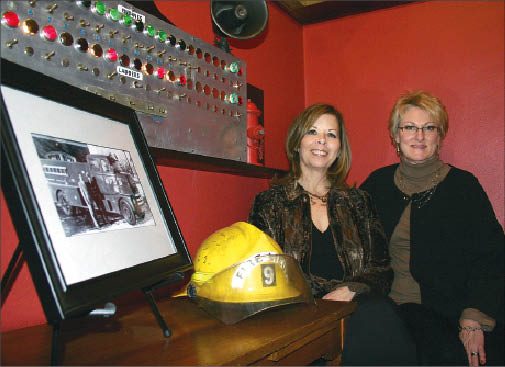
Home » Designing a path through slump
Designing a path through slump
Design Source Inc. partners emphasize sustainability, flexibility of work spaces

November 25, 2009
Design Source Inc., a longtime Spokane interior design firm, has made its mark here over the years, and now is adapting in the tepid economy.
In a business that relies heavily on new construction, Design Source has had to make ends meet with less in tight times, just as its clients have, say Susan Dellwo and Nancy Croyle, the company's founders and principals. Since the recession began, Design Source has reduced its staff, now employing a core group of six employees, down from a peak of 11 two years ago.
When the economy declined, a lot of clients who were planning projects pulled back, forcing Design Source to batten down its hatches as well, say Dellwo and Croyle.
"It really helps us to understand where the clients come from," Dellwo says. "We had a great team put together."
Though they decline to disclose the firm's annual revenues, Dellwo and Croyle say Design Source has used the slowdown as an opportunity to invest in further education and training for its employees to stay on top of trends in design, and to explore opportunities for expanding its client base. For example, it has returned more to a type of work it had done in its earlier years, working with commercial real estate agents to present visualizations of possible tenant improvement packages to potential commercial tenants. It had over time drifted from such work into more new construction projects.
Dellwo says the company also now is seeing a trend toward smaller projects and projects designed to help clients maximize their current spaces so they can postpone moving to larger quarters.
"They are accommodating more staff in the same workspace so they can stay in it," Croyle says.
Though times are tight, she says, clients now see design more as an integral part of their project and are more geared toward long-term value rather than being driven by construction schedules. They see the value of good design improving workplace performance and efficiency, she says.
Frequently, Design Source is contracted for a project first, even before an architect is retained, and helps an architect determine the needed size for a building based on the client's current and future staffing needs and how departments need to be able to work together, as well as storage needs and the company's marketing image, Dellwo says.
Recently, Design Source designed the remodeling of a former Qwest Communications International vehicle maintenance building for flooring wholesaler InterDecor Inc., which bought the building this fall. It's also designing the remodel of the lobby and chapel at Providence Sacred Heart Medical Center & Children's Hospital, and the reconfiguration of several floors of patient rooms there, Dellwo says. It has done other major projects here in the past such as the redesign of Washington Trust Bank's main office lobby in downtown Spokane.
In addition to commercial projects, Design Source works with architects on new-home construction, with as much as 25 percent of its business coming from residential construction and remodeling projects, Croyle says.
Design Source also has reworked its own space, located in a former fire station at 804 S. Monroe, on Spokane's lower South Hill, to reflect the way people there now work: with more open spaces and areas that lend themselves to collaboration, and fewer shelves for hard-copy resources since many of those resources now are available online.
Though Design Source still has rows of shelves filled with fabric and color samples for what remains a tactile industry, much of its layout work is done using computer software, Dellwo says.
Reflective of society's greater recognition of sustainability, Design Source has emphasized its use of what it describes as sustainable design practices, though the owners say they've always used sustainability in their work.
"A lot of the things we've done over time already were sustainable," Croyle says. She says it always has been the company's goal to reuse and recycle building materials. It also has focused on using the slower past year to beef up the education and professional growth of its own staff on sustainability. One of its staff members now is accredited in Leadership in Energy and Environmental Design (LEED). Design Source also has developed a sustainable product rating system to help its clients select materials and products that meet criteria for durability, air-quality standards, reuse potential, and percentage of recycled material.
In terms of office design, there's a lot more need for collaborative space, and with technology now so readily available, people don't have to work in the office anymore, Dellwo says.
Some of the considerations included in many modern workspaces now include such elements as movable walls or lightweight tables that can be pulled together to allow for work in pairs or groups as collaboration becomes more important. Also, with flat-screen monitors becoming the norm, workstations aren't as deep as they used to be, Dellwo says.
Companies now take measures such as designing floor space so that offices are in the center of a layout and cubicled workers are situated around the perimeter, opening up the workstations to the windows so the staff is free to enjoy the natural daylight.
She says employers now also are keenly aware of design as a way to appeal to younger employees, who have more awareness of their surroundings than older workers and a desire to be able to personalize their areas.
"The younger generation knows what they want; they want good design," Dellwo says. Storage spaces now are becoming more residential looking, she says.
Latest News
Related Articles



